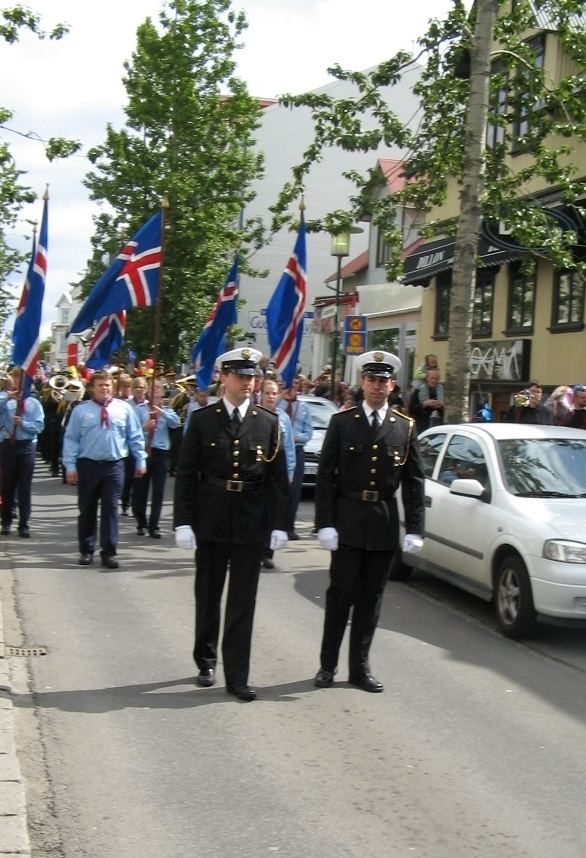Date 17 June | Frequency annual | |
 | ||
Next time 17 June 2017 (2017-06-17) | ||
Icelandic National Day (Icelandic: Þjóðhátíðardagurinn, the day of the nation's celebration) is an annual holiday in Iceland which commemorates the foundation of The Republic of Iceland on 17 June 1944 and its independence from Danish rule. The date was chosen to coincide with the birthday of Jón Sigurðsson, a major figure of Icelandic culture and the leader of the 19th century Icelandic independence movement.
Contents
History
The formation of the republic was based on a clause in the 1918 Act of Union with Denmark, which allowed for a revision in 1943, as well as the results of the 1944 plebiscite.
German occupation of Denmark meant that the revision could not take place, and thus some Icelandic politicians demanded that Icelanders should wait until after the war. The British and U.S governments, which occupied Iceland at the time, also delayed the declaration by asking the Icelandic parliament to wait until after 1943. Although saddened by the results of the plebiscite, King Christian X sent a letter on 17 June 1944 congratulating Icelanders on forming a Republic.
Abolishing the monarchy resulted in little change to the Icelandic constitution, "The King" was merely substituted for "The President". However the people of Iceland celebrated the end of the long struggle for total independence and praised Jón Sigurðsson for his early independence movement and Sveinn Björnsson, who became the first president of Iceland.
Celebrations
Today, Icelanders celebrate this holiday on a national scale. The celebration traditionally takes the form of a parade through each urban area with a brass band at the fore. Riders on Icelandic horses often precede the brass band and flagbearers from the Icelandic scout movement traditionally follow the brass band. After the parade several speeches are held out in the open, including one from Fjallkonan (the woman of the mountain), clad in Skautbúningur, who recites a poem. She represents the fierce spirit of the Icelandic nation and of Icelandic nature; this is in many ways an inheritance from the period of romanticism that reigned when the first steps toward independence were taken. After speeches and other officialities are over, a less formal celebration takes place with musicians entertaining the crowd, candy being devoured by children in huge quantities, and gas-filled balloons escaping their owners and flying to the sky. It is also somewhat traditional to expect rain on this day, particularly in the Southwest of Iceland.
